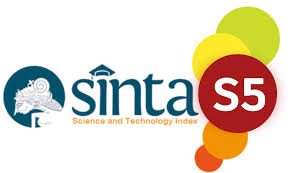The Analysis of the Power in Donald Trump’s Speech
DOI:
https://doi.org/10.37253/iallteach.v6i1.9784Keywords:
Power, Critical Discourse Analysis, SpeechAbstract
Effectively, a speech's contents and the choice of words can reflect and describe the speakers’ personalities or characters and their power. It can shape the public’s perception, be influenced by the figure, and reflect the speakers' viewpoints. This research used Norman Fairclough’s Critical Discourse Analysis (CDA) to identify the power in Donald Trump’s speech which was delivered on National Security and Terrorism in The Wake of The Orlando Massacre on June 13, 2016, at Saint Anselm College in Manchester. The text analysis proved that the power was represented through Pronouns, Repetition, Diction, Synonyms, Antonyms, and Assumptions. Discursive Practice showed the power came from the terrorism incident could bring into a sensitive issue that got many responses and attention from the public. The power also came from his social status in the community and institutions, both in politics and business. Trump’s rank socially made him get a lot of support.
Downloads
References
Ahmed, S. (2014). Critical discourse Analysis of Prime Minister’s Speeches on Harmful Aerial Vehicles (drones). International Journal of Language and Linguistics, 1 (2), 1-10.
Alba-Juez, L. (2009). Perspectives on Discourse Analysis: Theory and Practice. Cambridge Scholars Publishing.
Anwar, M. F. (1987). Teori dan Praktek Pidato. Surabaya: Amin.
Bayram, F. (2010). Ideology and Political Discourse: A Critical Discourse Analysis of Erdogan's Political Speech. Annual Review of Education, Communication & Language Sciences, 7, 1-13.
Brown, B. (2017). What are The Different Types of Public Speaking? PEN and the Pad. Retrieved from https://penandthepad.com/info-8131192-different-types-public-speaking.html
Darma, A. Y. (2014). Analisis Wacana Kritis dalam Multi Perspektif . Bandung: PT Refika Aditama.
Eagleton, T. (1994). Ideology (1st ed.). London: Routledge. https://doi.org/10.4324/9781315843469
Eriyanto. (2001). Analisis Wacana, Pengantar Analisis Teks Media. (pp. 320-322). Yogyakarta: LKis Group.
Ezeukwu, G. E. (2000). Essential of Public Speaking. Enugu: Feloks Communications.
Faiz, A., Chojimah, N., & Khasanah, I. (2020). The Ideology of Donald Trump on His Speech at The Israel Museum: Fairclough’s three models of CDA. Jurnal Penelitian Humaniora, 21 (2), 108-119.
Fairclough, N. (1995). Critical Discourse Analysis: The Critical Study of Language. New York: Longman Publishing.
Fairclough, N. (1992). Discourse and Social Change. Cambridge: Polity Press.
Fairclough, N. (1989). Language and Power. London: Longman.
Fairclough, N. (2001b). Critical Discourse Analysis as A Method in Social Scientific Research. in R. Wodak & M. Meyer (Eds.), Methods of Critical Discourse Analysis (pp. 125-138). London: Sage Publications.
Fairclough, N. L., & Wodak, R. (1997). Critical Discourse Analysis. In T. van Dijk (Ed.), Discourse as Social Interaction (pp. 271-280). London: Sage.
Foucault, M. (1977). Discipline and Punish: The Birth of the Prison. New York: Pantheon Books.
Gasparri, L., & Marconi, D. (2019). Word-Meaning. in E. N. Zalta (Ed.), The Stanford Encyclopedia of Philosophy (Fall 2019 Edition). Retrieved from https://plato.stanford.edu/archives/fall2019/entries/word-meaning/
Halliday, M. A. K., & Hasan, R. (1976). Cohesion in English. London: Longman.
Jespersen, O. (2006). Language: Its Nature and Development (1st ed.). Routledge. https://doi.org/10.4324/9780203715895
Mann, M. (2004). Fascists. Cambridge: Cambridge University Press.
Mayr, A. (2008). Language and Power: An introduction to Institutional Discourse (Advances in Sociolinguistics). Great Britain: MPG Books.
Mufanti, R., Gestanti, R. A., & Nimasari, E. P. (2017). Can I be A Public Speaker?: Get Ready for Speech (2nd ed.). Ponorogo: Nata Karya.
Mirzaee, S., & Hamidi, H. (2012). Critical Discourse Analysis and Fairclough’s Model. International Electronic Journal for Teachers of English, 2(5), 188-199.
Nurfadilah, A. (2017). A Critical Discourse Analysis of Teun Van Dijk on the Jakarta Post's Editorials “New Year in Singkil” and “Banning Hate Speech” (Bachelor's thesis, UIN Syarif Hidayatullah Jakarta, Fakultas Adab dan Humaniora).
Ponton, M. D., & Larina, V. T. (2017). Discourse Analysis in The 21st Century: Theory and Practice (II). Russian Journal of Linguistics, 21(1), 7-21.
Priatmoko, F. X. N. A., & Cahyono, S. P. (2013). Critical Discourse Analysis of Susilo Bambang Yudhoyono’s Speech. Dian Nuswantoro University Semarang, 14, 1-10.
Sacks, H., Schegloff, E. A., & Jefferson, G. (1974). The Simplest Systematics for The Organization of Turn-Taking for Conversation. Language, 50(4), 696–735. https://doi.org/10.2307/412243
Schiffrin, D., Tannen, D., & Hamilton, E. H. (2001). The Handbook of Discourse Analysis. Blackwell Publishers Inc.
Sayyora, I. (2022). The Role of Repetition as A Stylistic Tool in Political Texts. Zien Journal of Social Sciences and Humanities, 13 (1), 65-79.
Siompu, N. A. (2019). Relasi Makna dalam Kajian Semantik Bahasa Arab. In Konferensi Nasional Bahasa Arab V (pp. 53-58).
Ulfah, R., & Hidayat, N. D. (2020). A Critical Discourse Analysis of Parts of Speech from TED-Talk Video: How language Shapes The Way We Think. Journal of Language, Literature, and Teaching (JLLTE), 2(1), 49-60.
Van Dijk, T. A. (2001). Methods of Critical Discourse Analysis. London: Sage.




.png)






